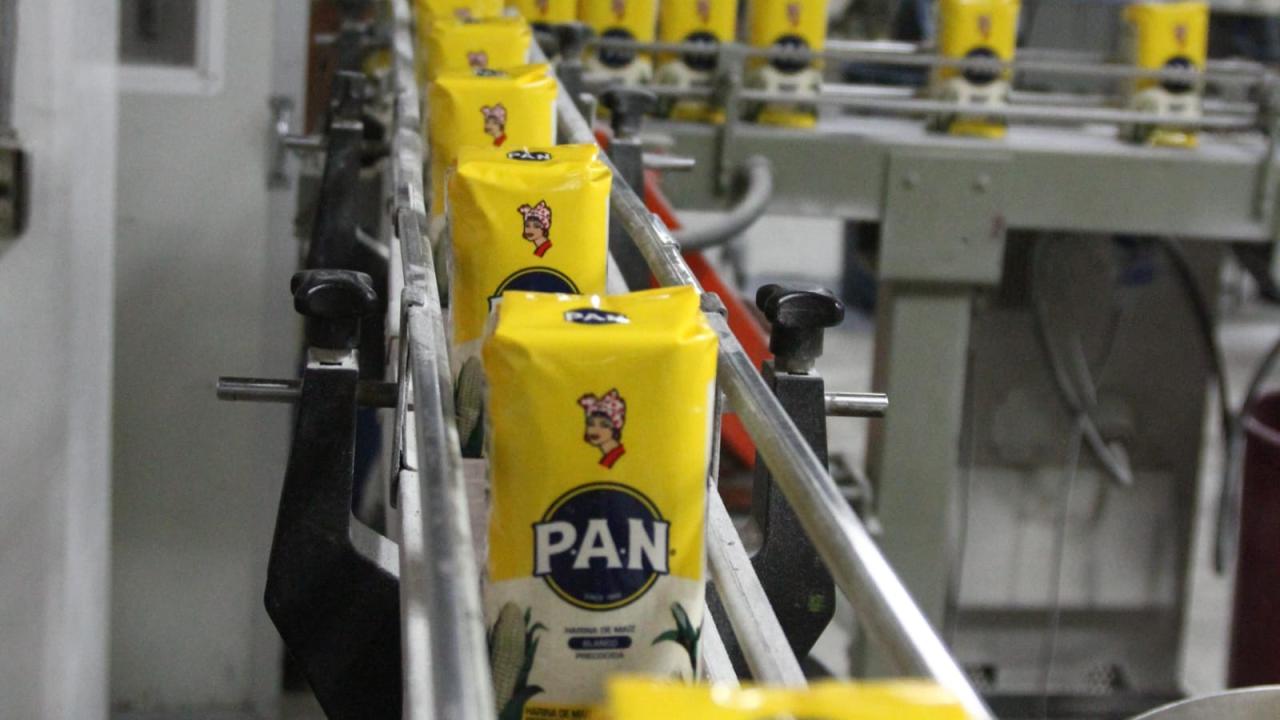
In the last three years, the Venezuelan company grew 67% in the markets of Peru, Chile and Ecuador. In the Inca country, it seeks to continue conquering distribution channels, driven by the opportunity represented by the versatility of PAN flour, breading and, more recently, malt.
Arepas are part of the daily diet of Venezuelans and PAN flour, produced by Productos Polar, is the main input to prepare them. However, given the Venezuelan migratory wave to several Latin American countries, the consumption of this flour made from white corn has increased to such an extent that the turnover of this line of business of the Venezuelan company has doubled since 2021.
However, Productos Polar's approach when landing in markets such as Ecuador, Chile and Peru is based on complementing the local diet and adapting to culinary preferences. Along these lines, the Venezuelan firm has been diversifying its portfolio and identifying new opportunities, such as breaded products and malt drinks introduced in January to the Peruvian market.
Although in 2023 the growth of the Venezuelan holding firm Empresas Polar in Peru - a country whose economy contracted 0.5% in that year - was almost zero, the sales volume in tons increased 45%. Likewise, in this country the reach of Productos Polar covers 75% of the territory.
Meanwhile, at the regional level (which includes Peru, Chile and Ecuador) in the last three years it experienced an increase of 67%.
“We have been offering pre-cooked corn flour to make tamales, tortillas, cakes, alfajores, empanadas, among others. It is a very versatile product, actually,” explained Oscar La Torre Milla León, commercial manager of Foods Polar Peru to AméricaEconomía , “We do not want to offer Peruvians arepas because it is probably not their way of consuming, but we do want to give them a range of possibilities. to be able to complement their diet.”
In that sense, although the Venezuelan population in this market is a captive niche, today Polar's challenge is to expand the consumer base. “Entering a new market through migrants who arrive in a country is a successful strategy in the short term. However, it is not enough to consolidate the demand for a brand in the medium and long term,” says José Ruidías Rojas, expert professor in sales and marketing at Pacífico Business School . “For multi-Latin companies to regionalize, they need to cross the limit of migrant segments and achieve purchasing preference for their brands among local inhabitants.”
For the professor, gastronomic fusion is an inevitable process when inhabitants of different countries mix due to various factors.
Although it is premature to ensure that Peruvian and Venezuelan cuisines have merged, Peru, Chile and Colombia are attractive markets for the export of Venezuelan brands because they have been the preferred destinations, explained Ruidías.
“Entering a new market through migrants who arrive in a country is a successful strategy in the short term. However, it is not enough to consolidate the demand for a brand in the medium and long term,” he added. “For multi-Latin companies to regionalize, they need to cross the limit of migrant segments and achieve purchasing preference for their brands among local inhabitants.”
This is how you can also find products such as Mavesa margarine and mayonnaise, melted cheddar cheese, Polar beer, and other frozen products behind the Polar Foods portfolio for a total of 35 categories. In Colombia, for example, its portfolio includes pet and baby food.
“Venezuelan migration has been an initial factor, but the expansion strategy is based on conquering new territories following a plan previously defined more than two decades ago,” said La Torre.
The company has seen changes to its strategy and product offering during and after the pandemic.
In short, and matching Ruidías' suggestion, the company's plan is divided into three stages. First of all, understand the particular taste and customs of each market to adapt it to your value proposition. Then, generate a large amount of product testing accompanied by communication campaigns, which are not necessarily aimed at migrants, but rather manage to position their brands as powerful options in the markets where they compete. And, finally, ensure the reach and coverage of your products through the efficient management of distribution channels that become your allies with the intention of achieving rapid geographic expansion.
MALTA IN PERU
According to La Torre, its objective for 2024 is to grow both in volume and value, leveraged by its distribution (wine stores, supermarkets, self-service and wholesale markets) and portfolio. The introduction of Maltin malt, which exceeded the company's sales expectations despite being in an initial phase of development and market exploration, reflects the results of this strategy based on alliances to expand in the country.
“We have closed commercial agreements with Cencosud at the end of March, which has facilitated the presence of the product [malt] in convenience stores and supermarkets such as Wong and Metro,” explained La Torre. “However, there are territories to explore, especially in the provinces. “We are in the process of mapping and penetrating new channels, such as restaurants and hotels.”
He added that, aware of their competition against large companies with a solid consumer base in the country, this “new category” would be the door for the consumer to know about their value proposition: product versatility.
“By the end of this year we plan to have at least two more brands within the portfolio to be launched,” La Torre said.









